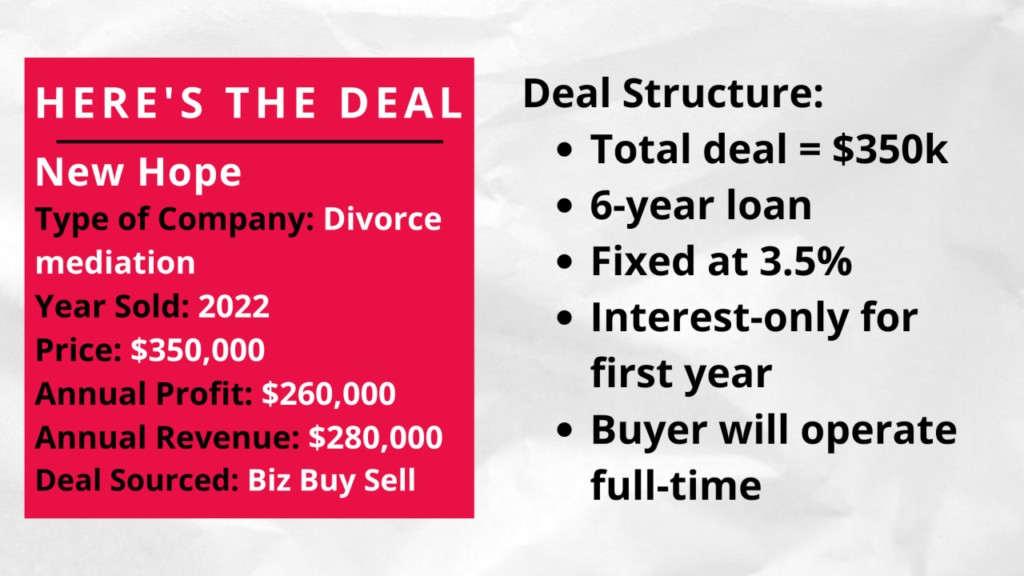
A recent post in our private community for the Contrarian Community brought to light a discussion of when and how to use EBITDA vs SDE.
And, for that matter, what the hell these metrics actually mean.
The post ignited a firestorm of comments & conversations, racking up dozens of likes in mere hours within our exclusive private community.
If it’s coming up in this group of business-buying badasses, then this topic is worth tackling head-on here.
As you know, we’re all about cutting through the BS, so buckle up, my friends. Today, we’ll embark on a no-holds-barred journey to explore the key differences between EBITDA and SDE when it comes to valuing and buying a small business.

EBITDA: the slick, suited-up Wall Street darling
First, let’s talk about EBITDA: earnings before interest, taxes, depreciation and amortization.
It’s the slick, suited-up Wall Street darling that makes you feel like a financial genius just by saying it. But what does it really mean?
In simple terms, EBITDA measures a company’s profitability. It strips away layers like interest expenses, taxes on earnings, depreciation of fixed assets and amortization of intangible assets.
What you’re left with is a “bottom line” that reveals the raw, unadulterated profitability of a company.
But like any Wall Street darling, EBITDA has its dark side. While it’s great for making your numbers look pretty, it doesn’t account for debt levels or long-term liabilities. And that’s a big deal when you’re deciding whether to bet on a company.
Moreover, EBITDA is vulnerable to manipulation through adjustments and accounting standards that can obscure the real picture.
So, use EBITDA wisely, my friends. Don’t be seduced by its slick appearance and forget its deficiencies.

SDE: the street-smart hustler
Now, let’s turn our attention to SDE, or seller’s discretionary earnings.
The International Business Brokers Association (IBBA) defines SDE as “the earnings of a business prior to income taxes, depreciation, amortization, interest, non-operating income and expenses, nonrecurring income and expenses, and one owner’s entire compensation (including benefits and any non-business or personal expenses paid by the business).”
To put it simply, SDE is like EBITDA’s scrappy, street-smart hustler cousin. It’s a measure of a company’s earning potential, so in that sense, it’s not that dissimilar from EBITDA.
The main difference is that SDE includes the owner’s salary and compensation when the owner is operating the business.
In contrast, EBITDA would need to include compensation for an operator.
Here’s the thing: many of the smaller businesses that use SDE don’t have a ton of reasons for depreciation of assets or interest on debt. They’re often smaller, simpler businesses with an owner-operator at the helm.
And that’s where SDE shines—it’s the perfect metric for valuing these scrappy, nimble enterprises.

Unleashing SDE’s true potential
To determine a business’s SDE, you’ll need to consider various “add-backs.” Think of these as the secret sauce that unleashes SDE’s true potential.
Jeffrey Baxter of MidStreet Mergers and Acquisitions has a fantastic article that breaks down the different types of commonly used add-backs in determining SDE.
Here’s a quick summary:
- Standard add-backs: Salary for one full-time owner, payroll taxes and EBITDA add-backs
- Discretionary add-backs: Personal travel, personal or family fuel, club dues, owner’s health insurance, personal mobile phones, and charitable donations
- Non-recurring add-backs: One-time expenses like upgrades, tech, or other extraordinary costs
- Non-operating add-backs: Income or expenses unrelated to core operations of the business, like gains or losses from investments
Mastering the art of add-backs can make a massive difference when you’re trying to make sense of a business’s SDE. It helps you paint a more accurate picture of the company’s true earnings potential, which is crucial when you’re deciding whether to buy.

Cashflow is king
Let’s not forget one crucial point when it comes to EBITDA and SDE:
Neither metric guarantees cash in your pocket.
While depreciation might save you money on taxes and help grow your wealth in assets, it won’t exactly line your pockets with spendable green.
And if you’re using other people’s money to finance your acquisition, you’ll need that profit margin to cover your debt.
Remember, the goal is to build a sustainable business that generates real cashflow, not just impressive numbers on paper.
So, when you’re valuing a business and calculating EBITDA or SDE, always keep in mind that these figures represent potential earnings and cash flow, but they’re not a direct measure of the cold, hard cash you’ll be able to spend as the business owner.
Stay focused on what truly matters: building a profitable, cash-generating business that aligns with your financial goals and aspirations.

The final showdown
So, who’s the winner in this cage match between EBITDA and SDE? Like any good fight, it’s not that simple. Both metrics have their strengths and weaknesses, and the one you should use depends on the specific business and your unique circumstances.
If you’re looking at a larger, more complex business with multiple layers of financial entanglement, EBITD can help you cut through the noise and focus on the company’s profitability.
On the other hand, if you’re sizing up a smaller, simpler business with an owner-operator running the show, SDE might be your go-to metric. It’s tailored for these types of businesses and can give you a clearer understanding of the company’s potential for generating cash flow.
So, there you have it: the ultimate showdown between EBITDA and SDE is essentially a draw. It’s not about picking your favorite metric and sticking with it. It’s about knowing which metric to trust and when.
Use this knowledge to make smarter decisions when valuing and buying businesses, and you’ll be well on your way to becoming an unstoppable force in the wild world of business valuation.



This Week in Biz Buying:
️ Bed, Bath & Beyond-Bankrupt: liquidating after filing for Chapter 11 (In the market for towels and instapots at 60% off? Now’s your moment.)
Experts answer: what’s the acquisitions market like in April 2023?
Kindred (Airbnb-style house-swaps) raised an extra $15M to expand
UK’s GoSimpleTax acquires Coconut to offer end-to-end bookkeeping
Ikea pushing a $2.2B US expansion to compete with Wayfair & Walmart




